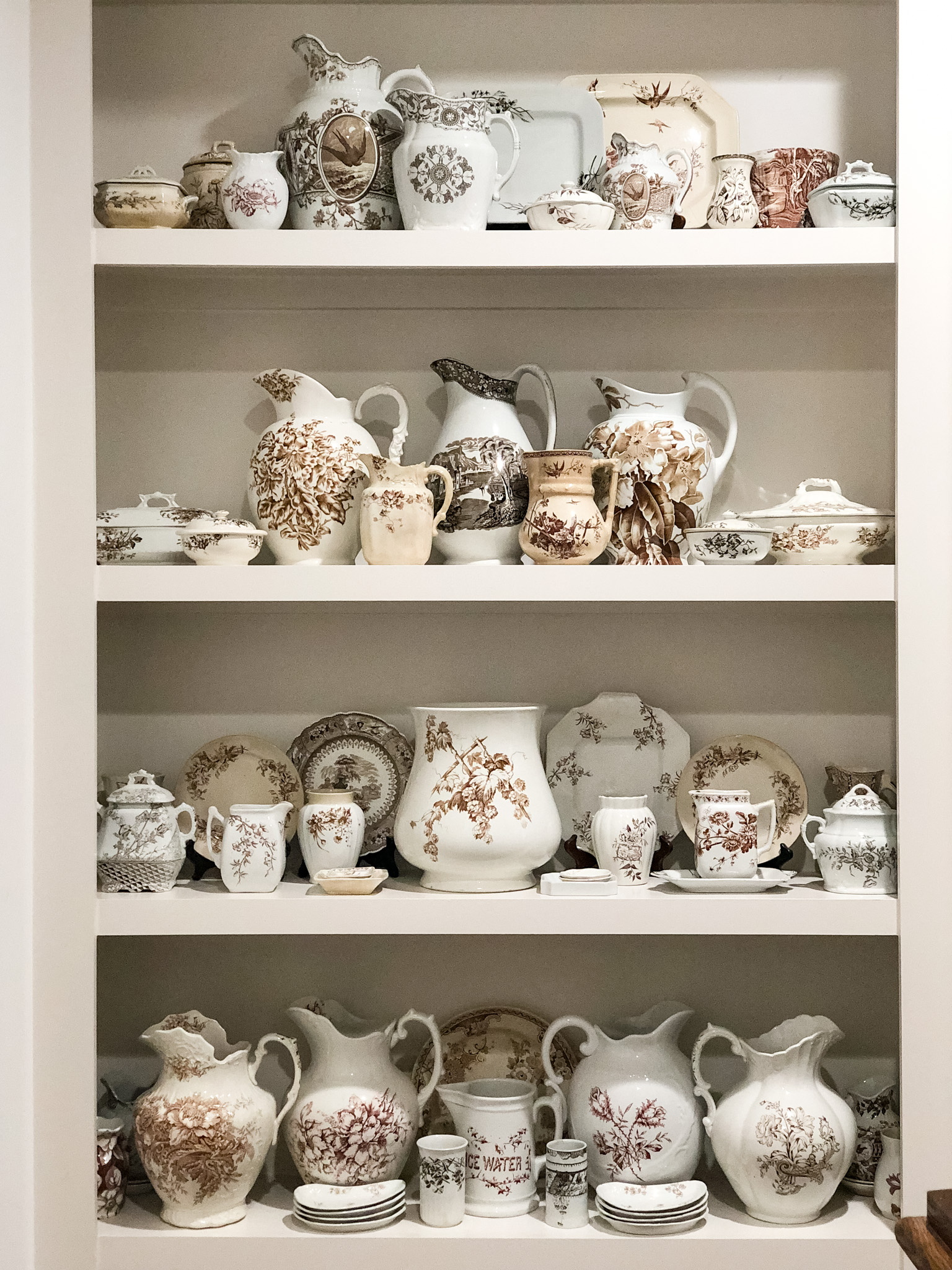As an antique collector, you want to make sure you keep your antique collection manageable. Yes, I will say it! There is a fine line between collecting and hoarding. The point of collecting is to enjoy your treasures and share their history, but when the treasures take over your house and your time needed for important tasks, something needs to change. My suggestion is before you get to a point of hoarding antiques, it is best to formulate a plan for managing your collections.
[Affiliate links are used in this post. As an affiliate for a program (including being an Amazon Associate), I get a small commission (earn money) from qualifying purchases made through the included links, at no additional cost to you.]

Now, I will say I embody a “more is better” philosophy when it comes to decorating. I love a cozy look created by layering; however, I am also a very organized person. I prefer everything to have a place, and everything to be in its place.
Below are ways I manage my own antique collecting, as well as some additional suggestions:
(1) Evaluate the Antique Before Purchasing It
The best way to keep your antique collection manageable is start before the collectible even enters your house. Evaluate your purchase beforehand to make sure it is a worthy one. Do not buy just to buy. Instead, analyze the piece by asking yourself a few important questions:
- Do I own this antique already? If so, do I really need a second one?
-
- Would a pair have a benefit in my home?
- Is it better quality than the one I own, meaning I could trade-up and sell the one I have at home? What is my plan for making sure that actually happens?
-
- Does this antique fit in my budget? If I keep looking, will I find one at a better price point?
- Is this antique rare?
- Is this antique versatile?
-
- Can I use it for multiple purposes?
- Could it go in multiple rooms in my home?
-
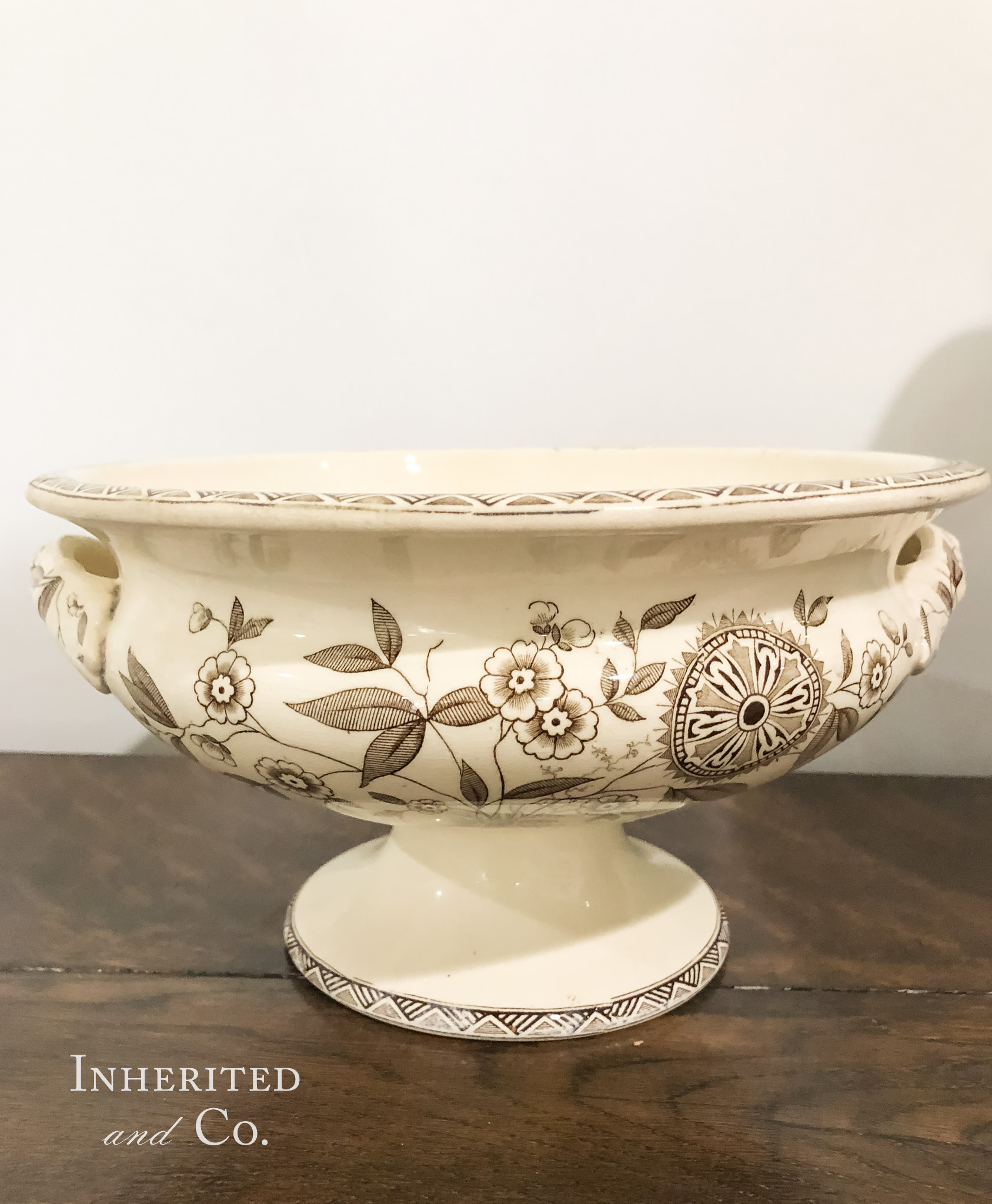
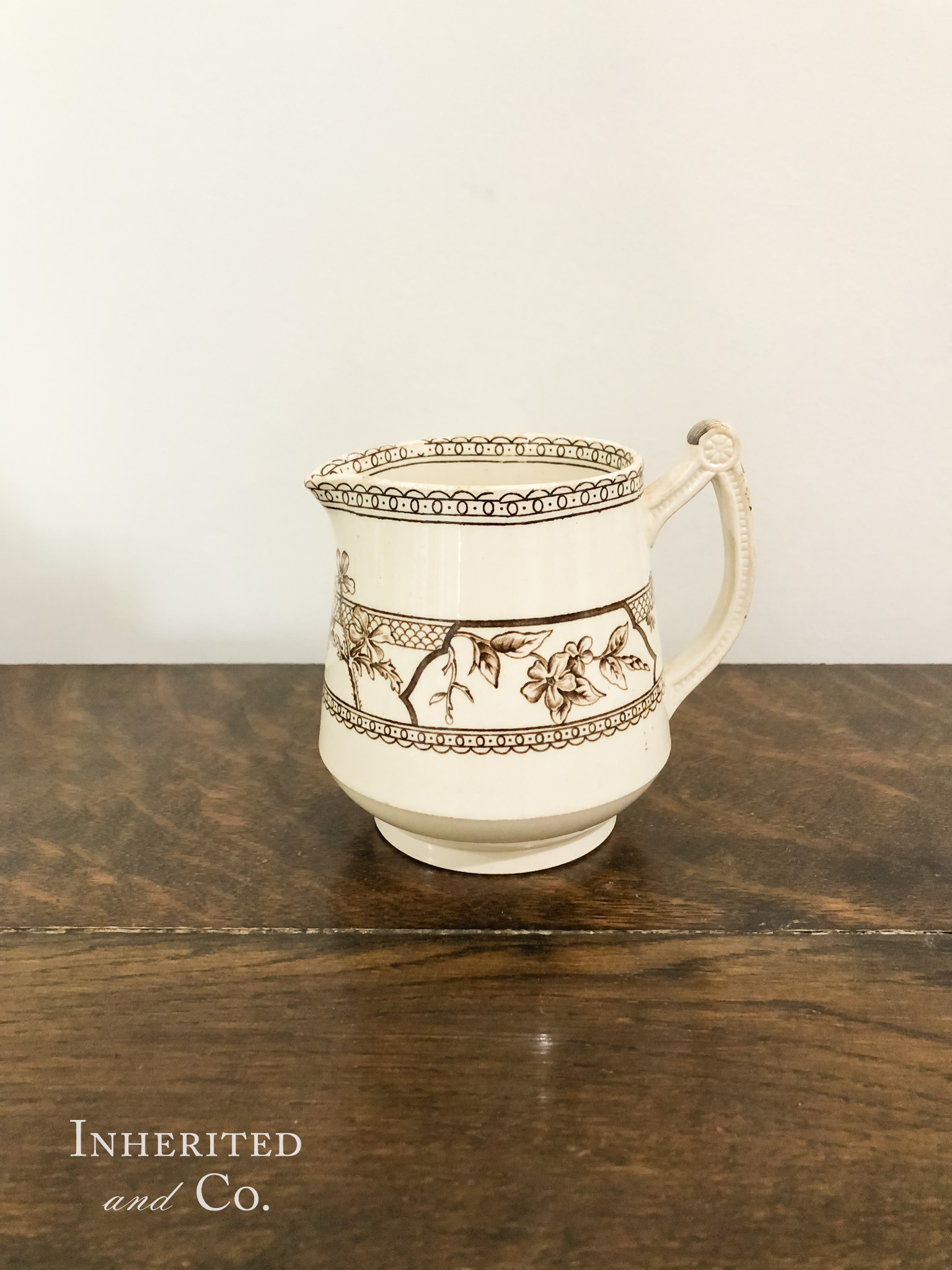
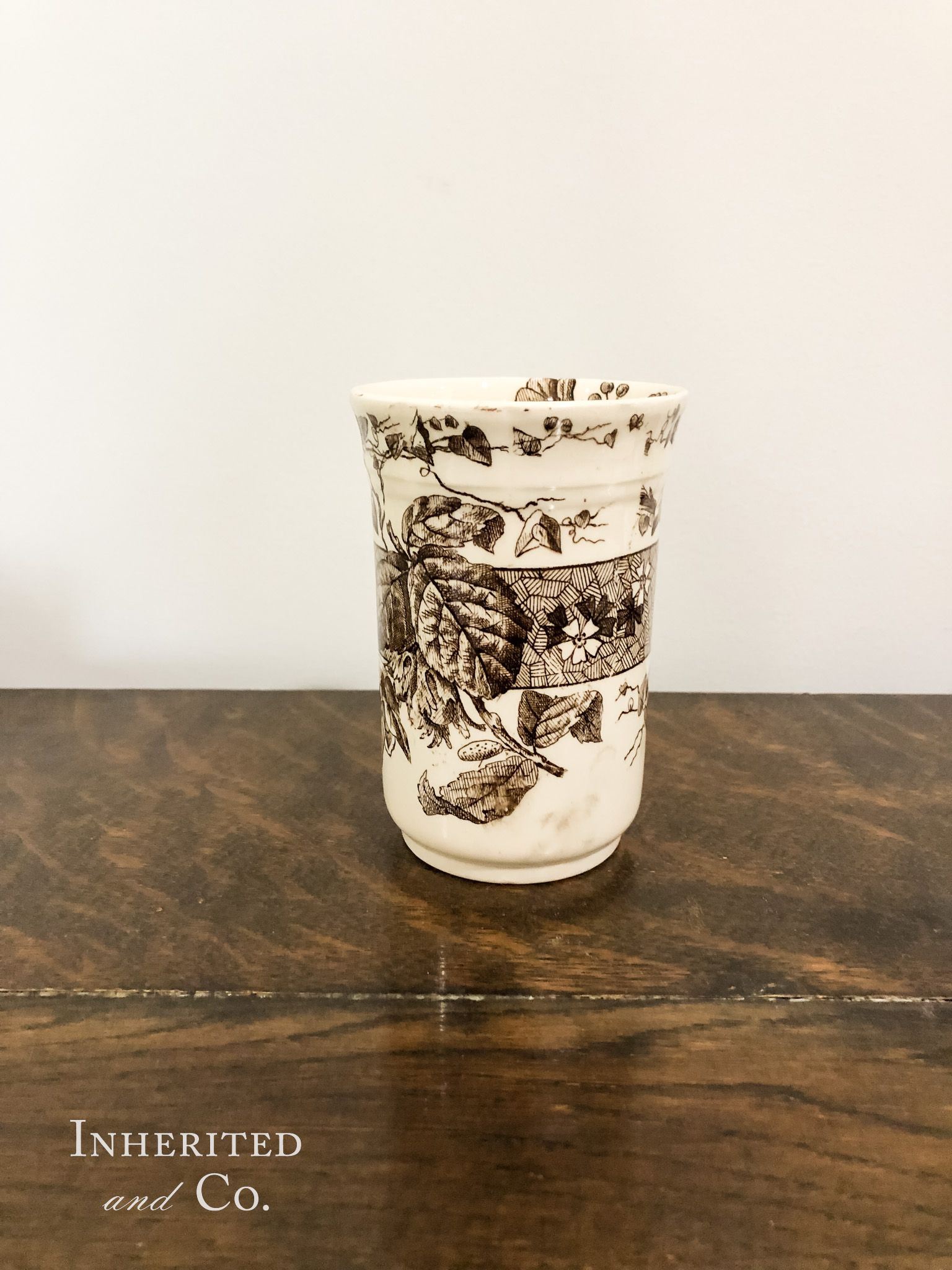
(2) Follow the “One In, One Out” Rule
Once the antique enters your house, you might consider following the “One In, One Out” Rule, meaning you purchased a collectible and must decide which one it will replace in your home. The point here is that the new purchase will fit perfectly where the other antique was and not cause any issues when displaying it.
This rule works for those who have a solid plan for getting rid of the other one. Ask yourself:
- Firstly, do you want to get your initial investment back on the “out antique”? Will you have to sell it for less than your investment? If so, are you okay with that and having the space and the newer item instead? If not, remember this when making your initial purchase and buy smart.
- Are you an antiques dealer who can easily put it in your booth? Should you get a booth if you are doing a lot of buying, collecting, and redecorating?
- Can you sell it on Facebook Marketplace or Craigslist? Do you want to bother with potential no-shows and managing inquiries on the listing? Where will you keep the antique until it sells?
- Will you conduct a yard sale to sell the antique? Where will you keep it until the sale? Is waiting to sell the item creating unnecessary clutter?
I will say I do not personally like the rigidity of this rule, or the constant managing of my antiques. You can see what I do instead if you keep reading. See suggestions #3 and #4.
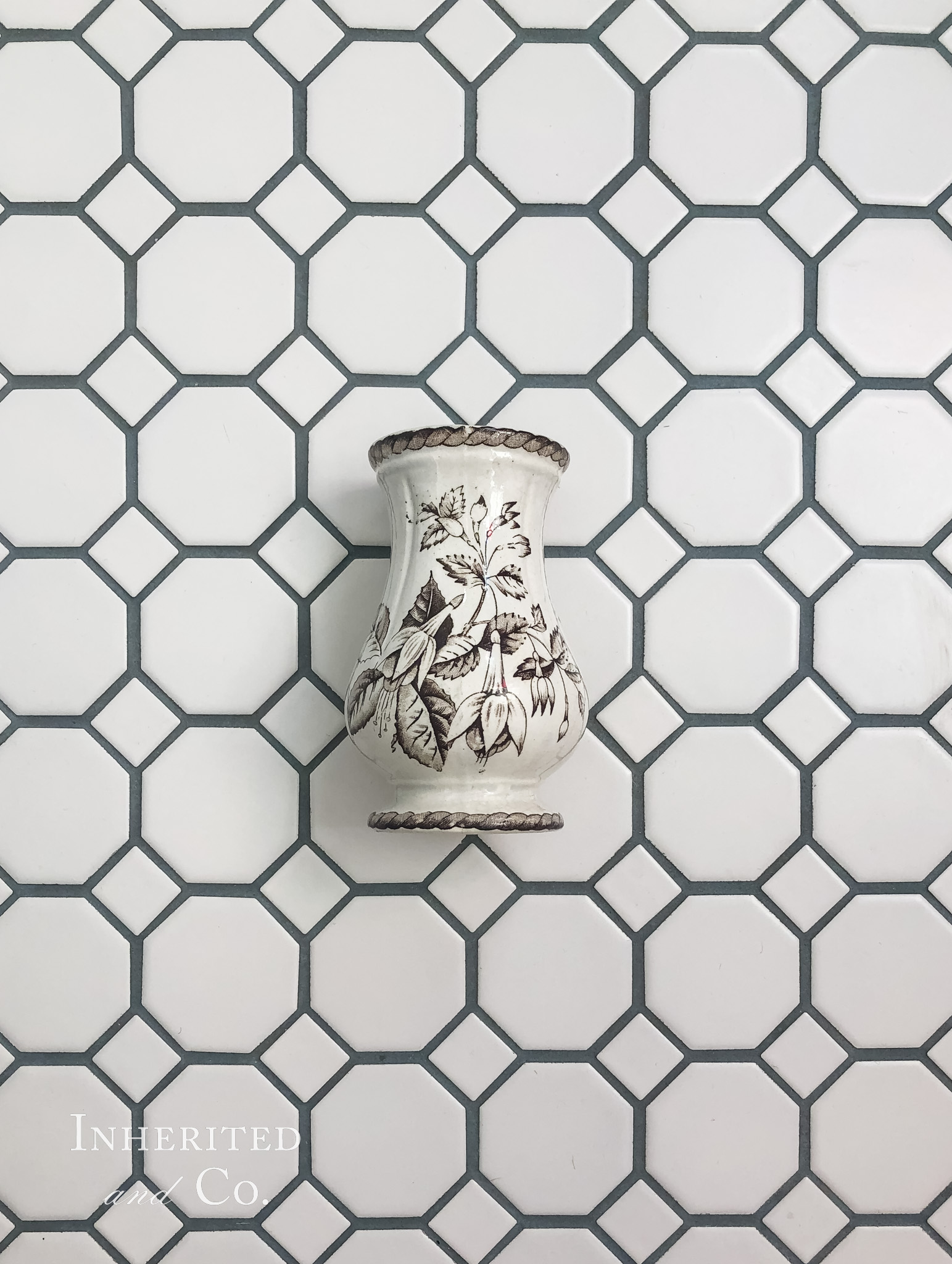
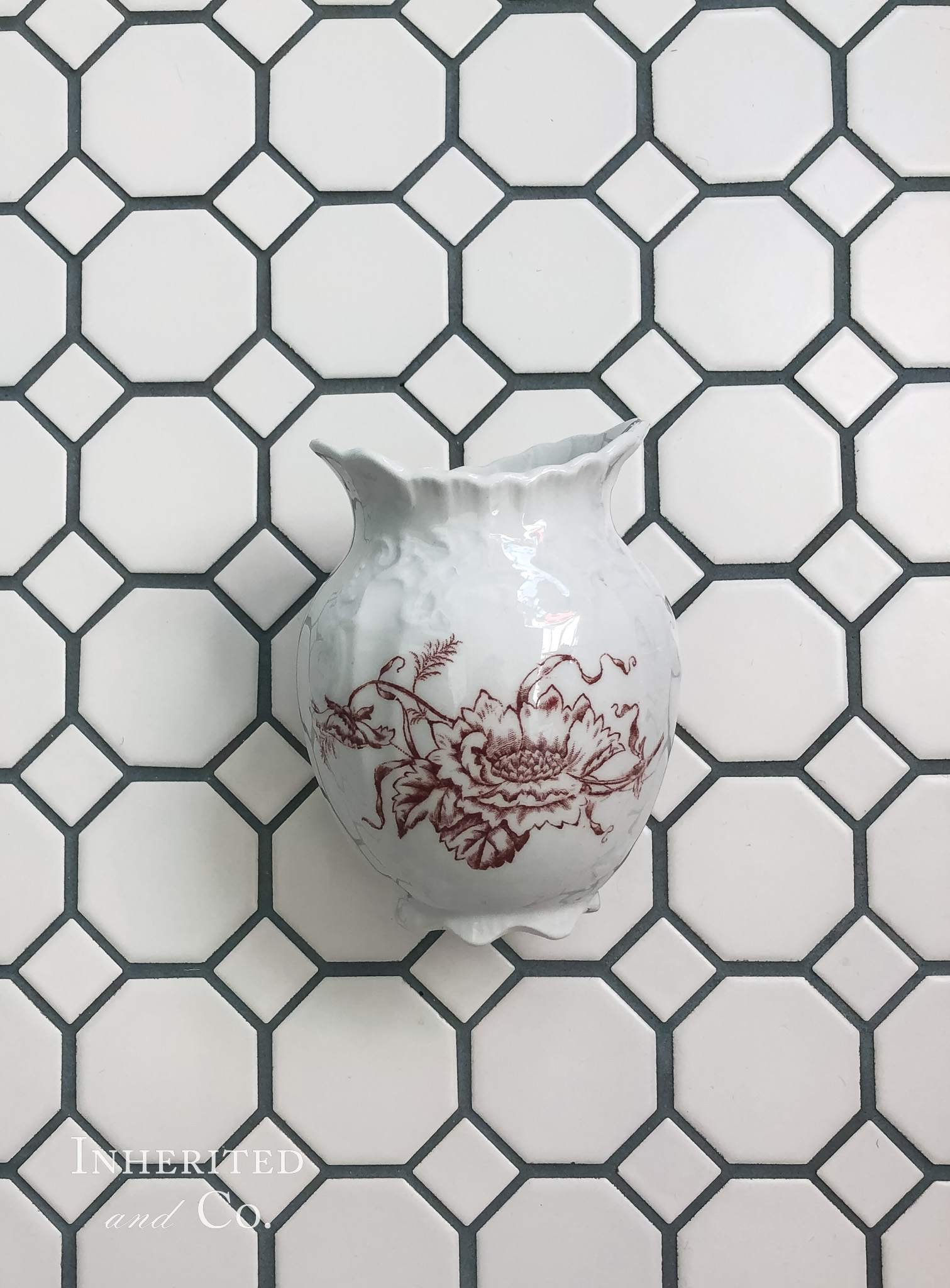
(3) Assign Physical Parameters for Displaying
Another option to consider for keeping your antique collection manageable is assigning a physical parameter for displaying your collection.
When we built our new house, I wanted shelves dedicated to displaying several of my collections, one in particular was my antique brown transferware. My hope was this transferware would have a home, a dedicated spot where I would display it. The plan was if I brought home a new-to-me piece of brown transferware, I would put it on the designated shelf, not allowing myself to go outside of those physical parameters.
I will say this system works really well. I like knowing where my collection is and being able to easily bring in a piece and evaluate if I want to keep it or sell it. Do I have a piece of brown transferware outside of that shelf? I do. Those pieces are elsewhere to bring a balance of texture or color to another space, not to create an additional display space. Majority of my brown transferware collection is housed in its designated built-in shelf, making this antique collection manageable.

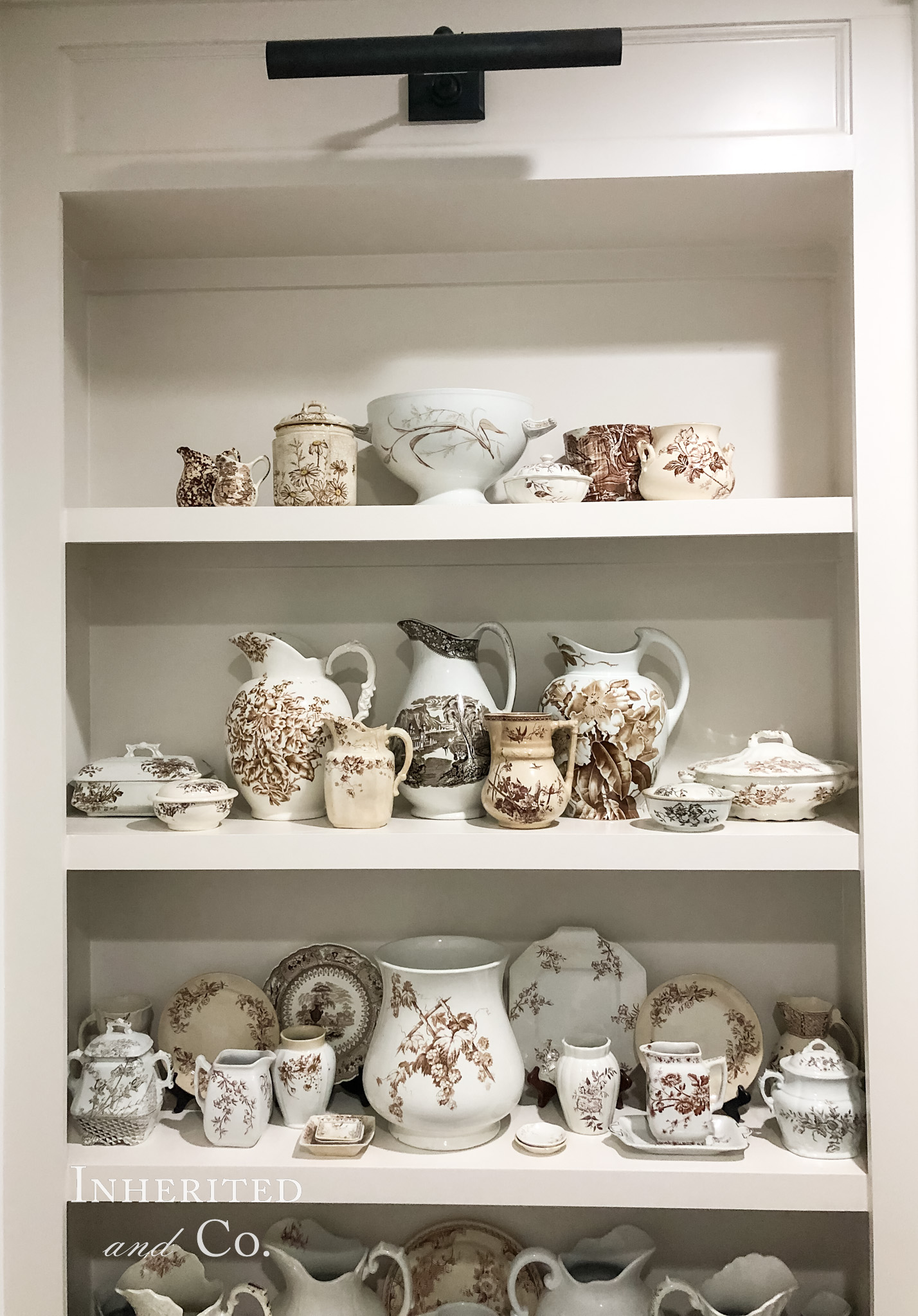
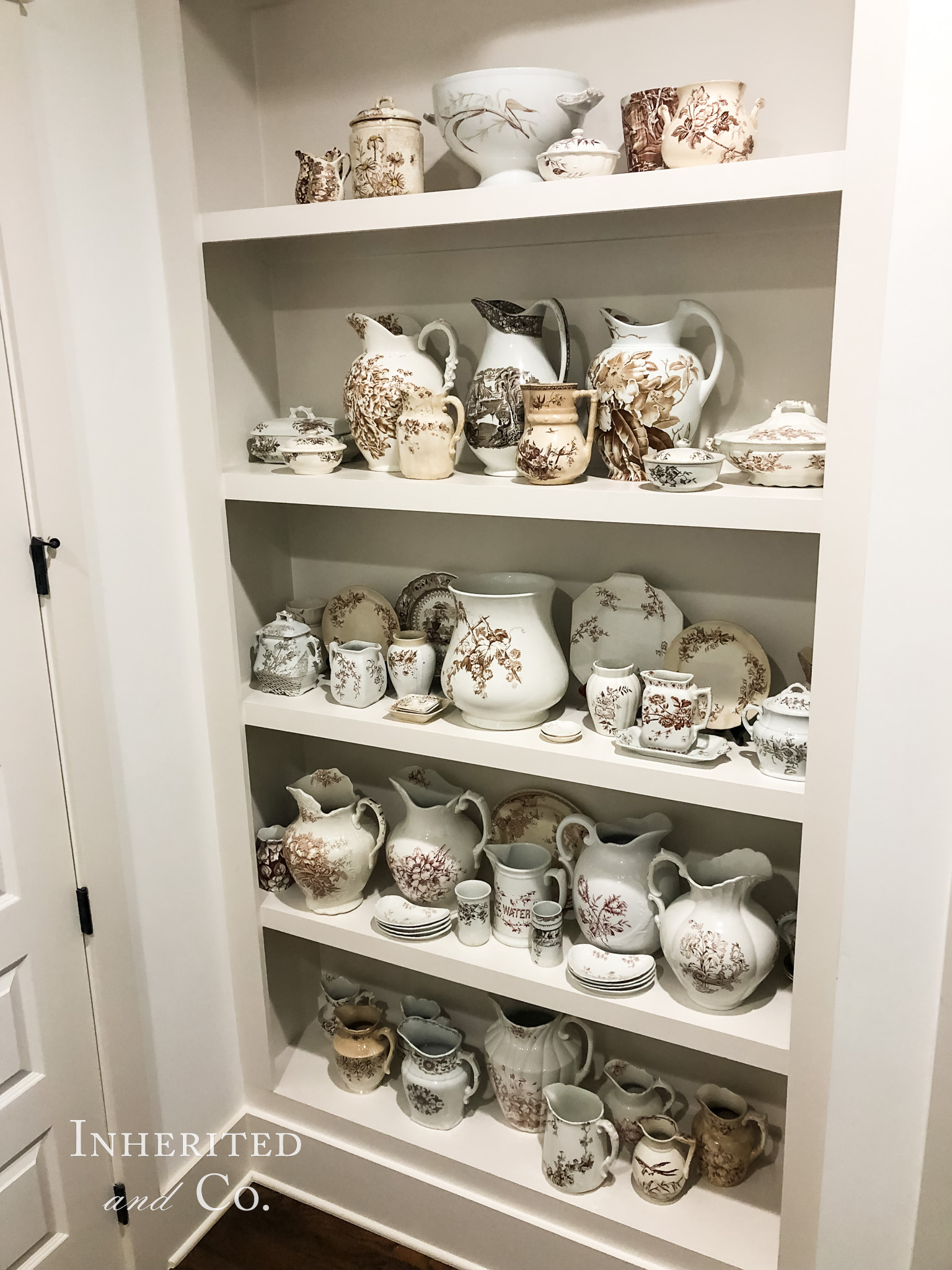
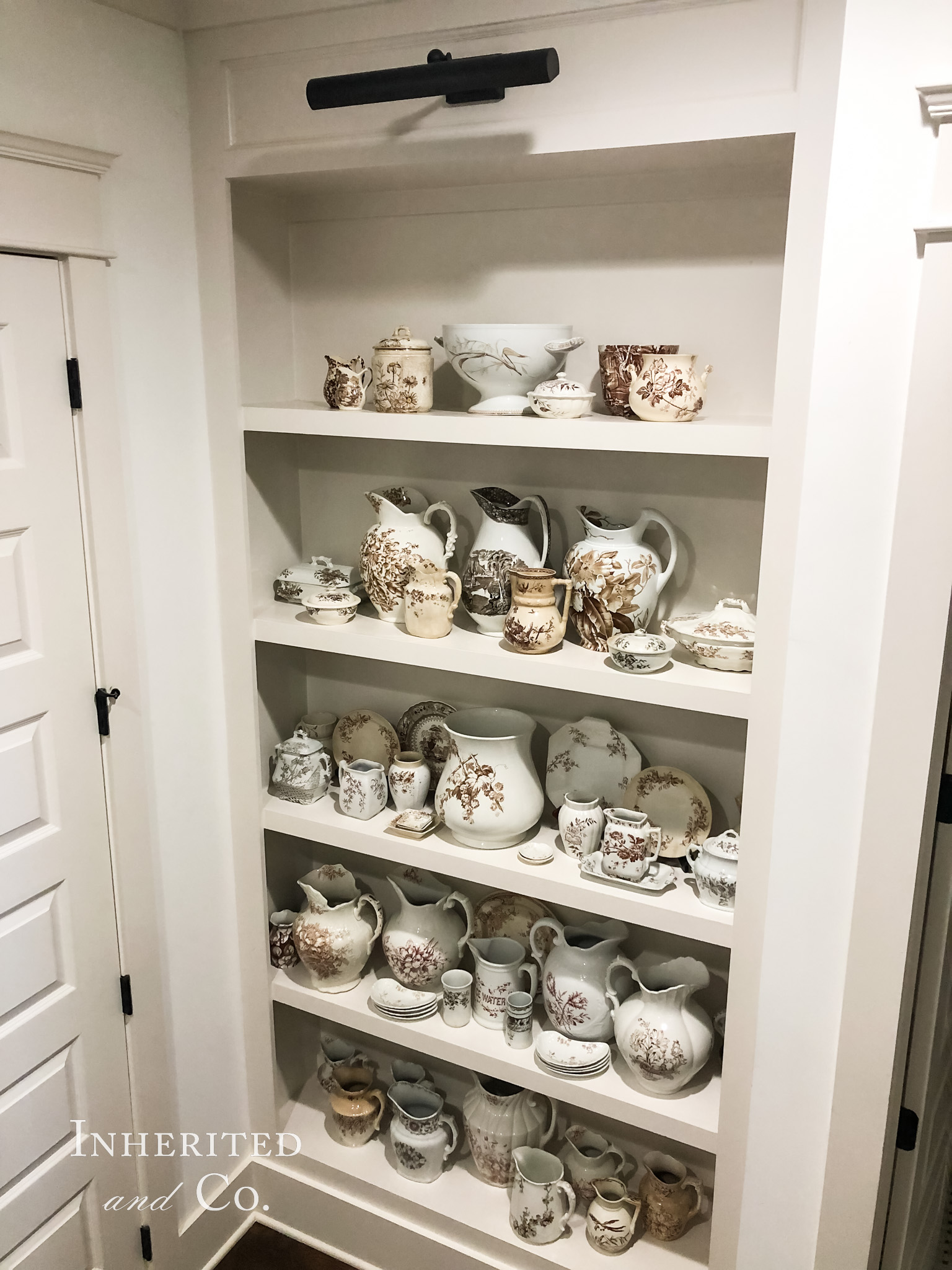
(4) Conduct Seasonal Collection Clean-outs
With a larger collection that I might have spread throughout my home, like my ironstone pitchers, I prefer to conduct seasonal clean-outs. I will go around the house and take every pitcher I own off of the shelf, out of the cabinet, or off of a tabletop, placing them in one central location. This location is usually the kitchen and adjacent breakfast nook.
From there, I will either sort them into like patterns or heights or some combination of the two. It might be that I have found another pitcher to match a pattern but did not have it displayed with the others. It might be that I had a pitcher in a place that balanced the décor there, but I do not love it. It might be that I have a repeat pitcher and one is in better condition than the other. Whatever the case, I evaluate my collection and decide what pitchers I want to let go. This task usually takes several days, but it is always quite fun to see all of my pretties in one location.
Before I place the ironstone pitchers back, I also dust and clean them and the shelf, cabinet, or tabletop that housed them. I have gone through seasons where I was too busy to do this massive management of my collection. As an antiques dealer and collector, I prefer to do this clean-out more than once a year if I can. If you can only do this clean-out once a year (or if your level of collecting does not warrant the frequency that an antiques dealer might need), spring is a great time with spring cleaning probably already happening in your home.
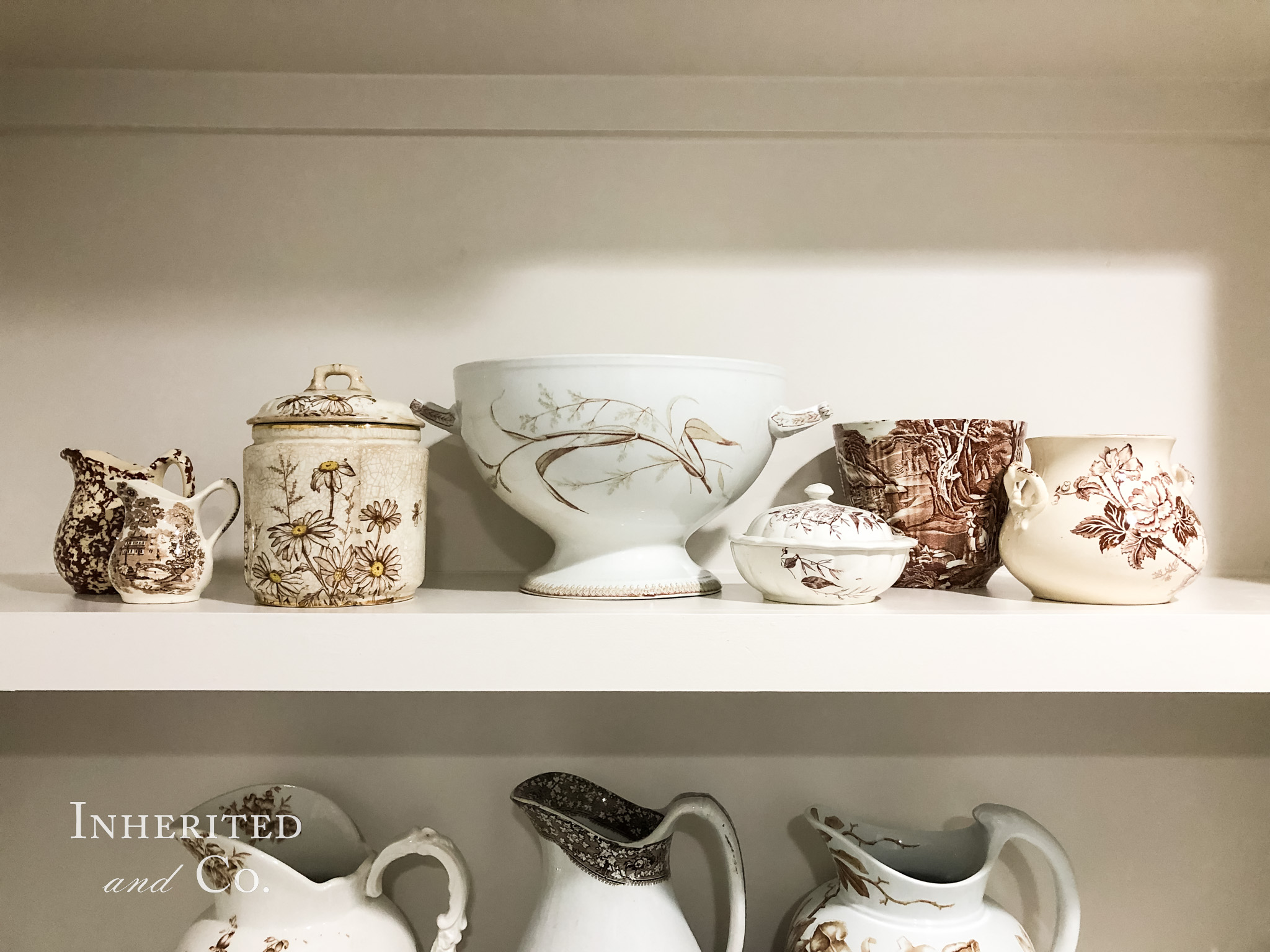
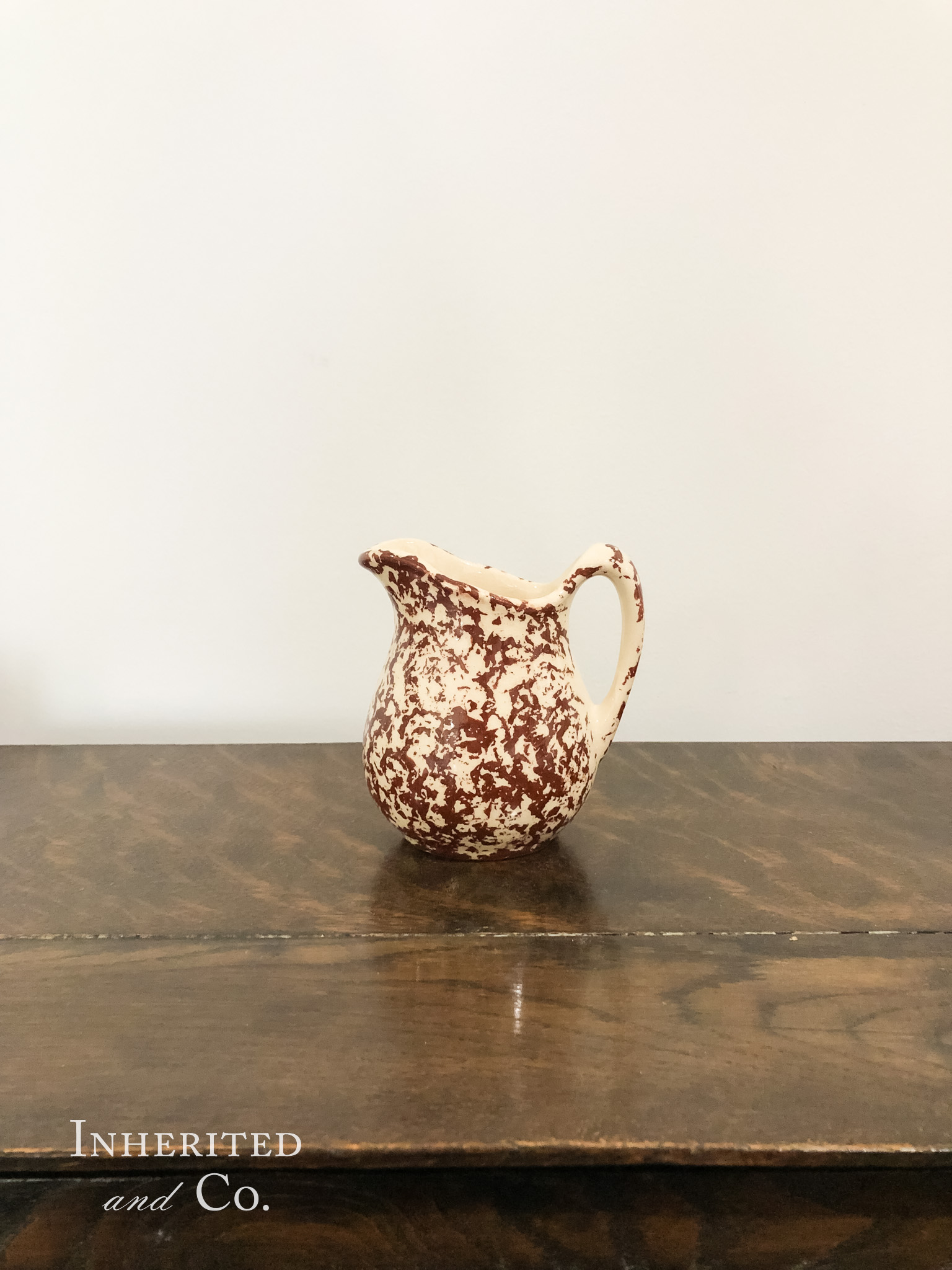
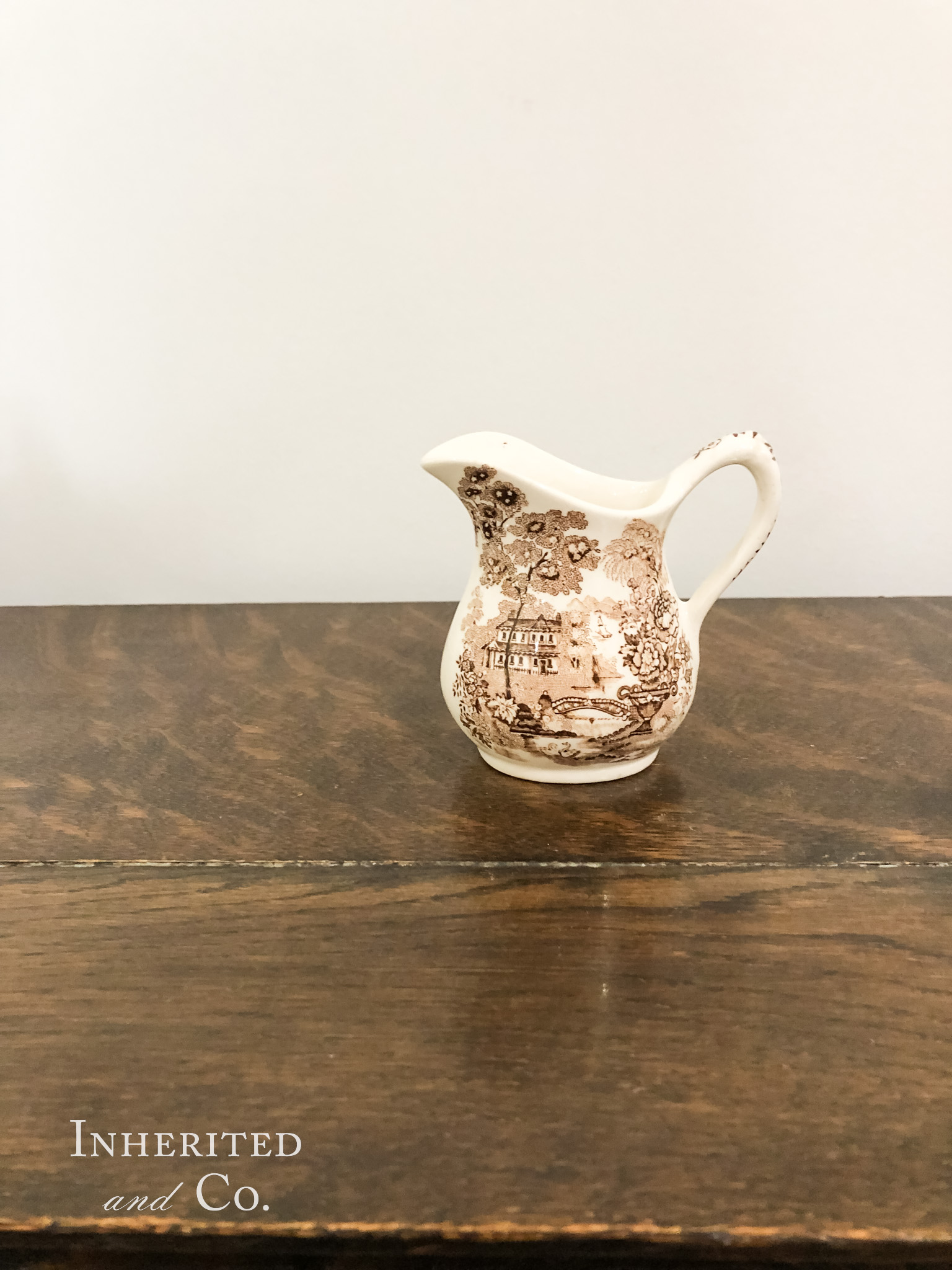
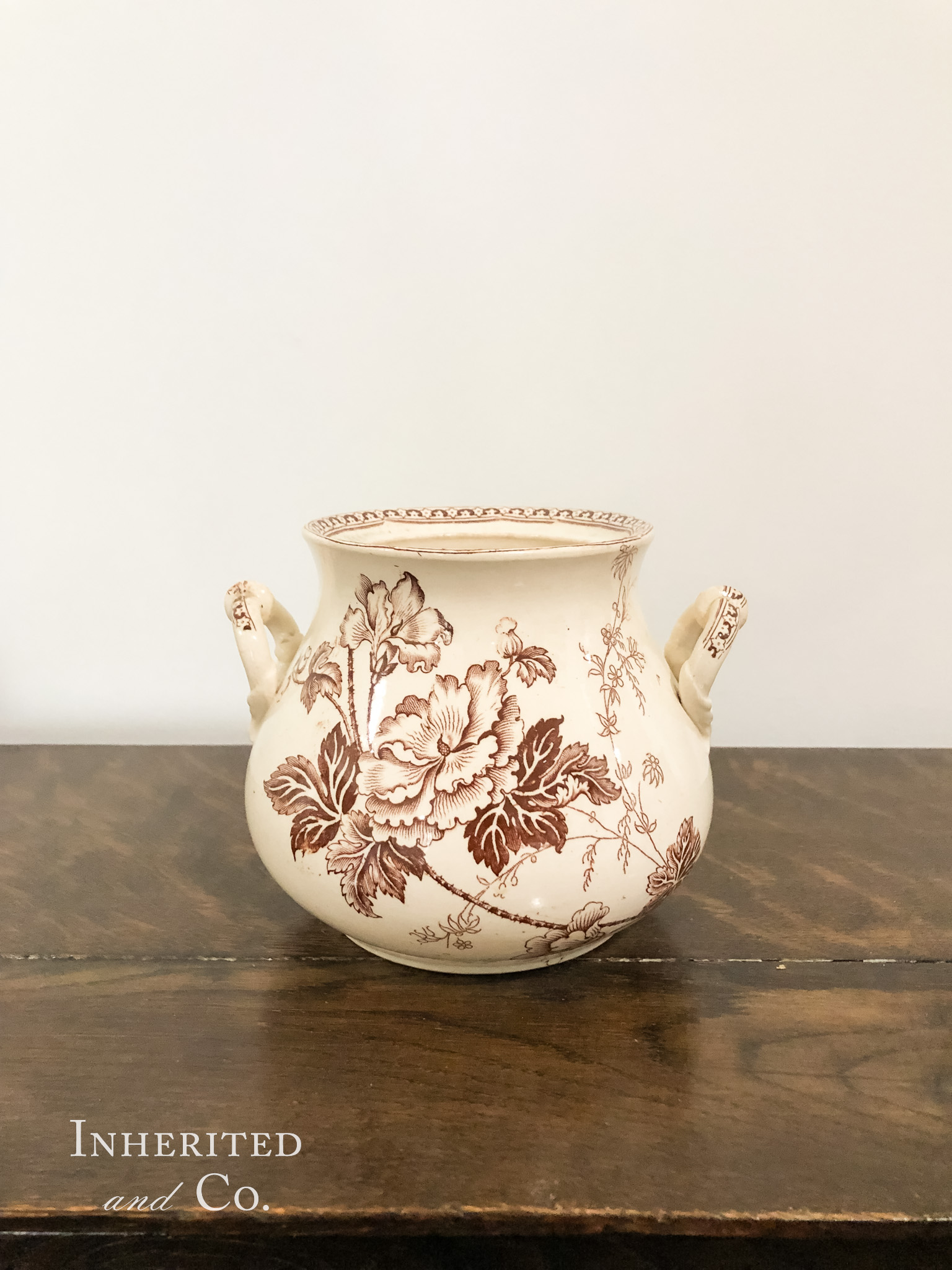

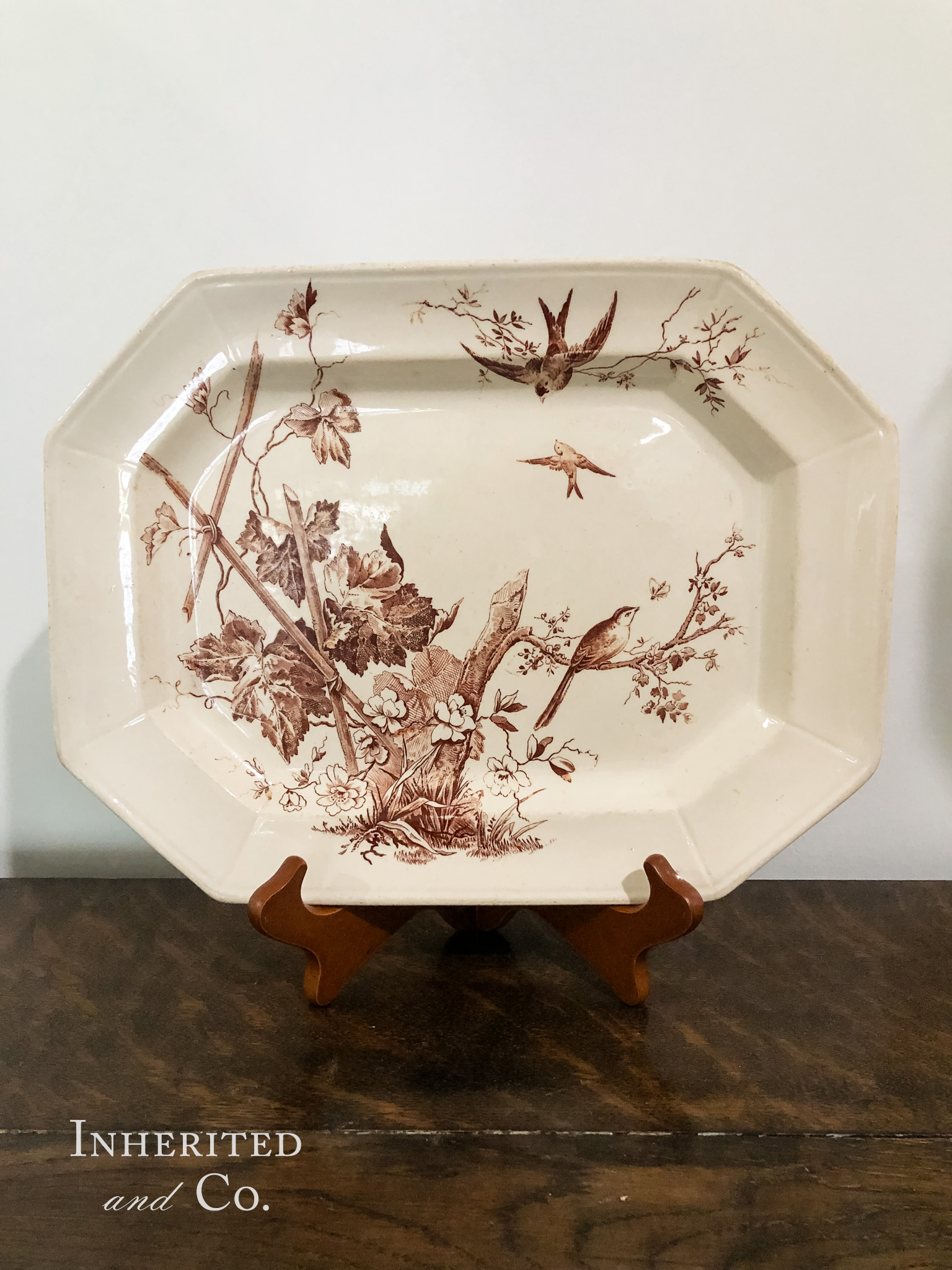
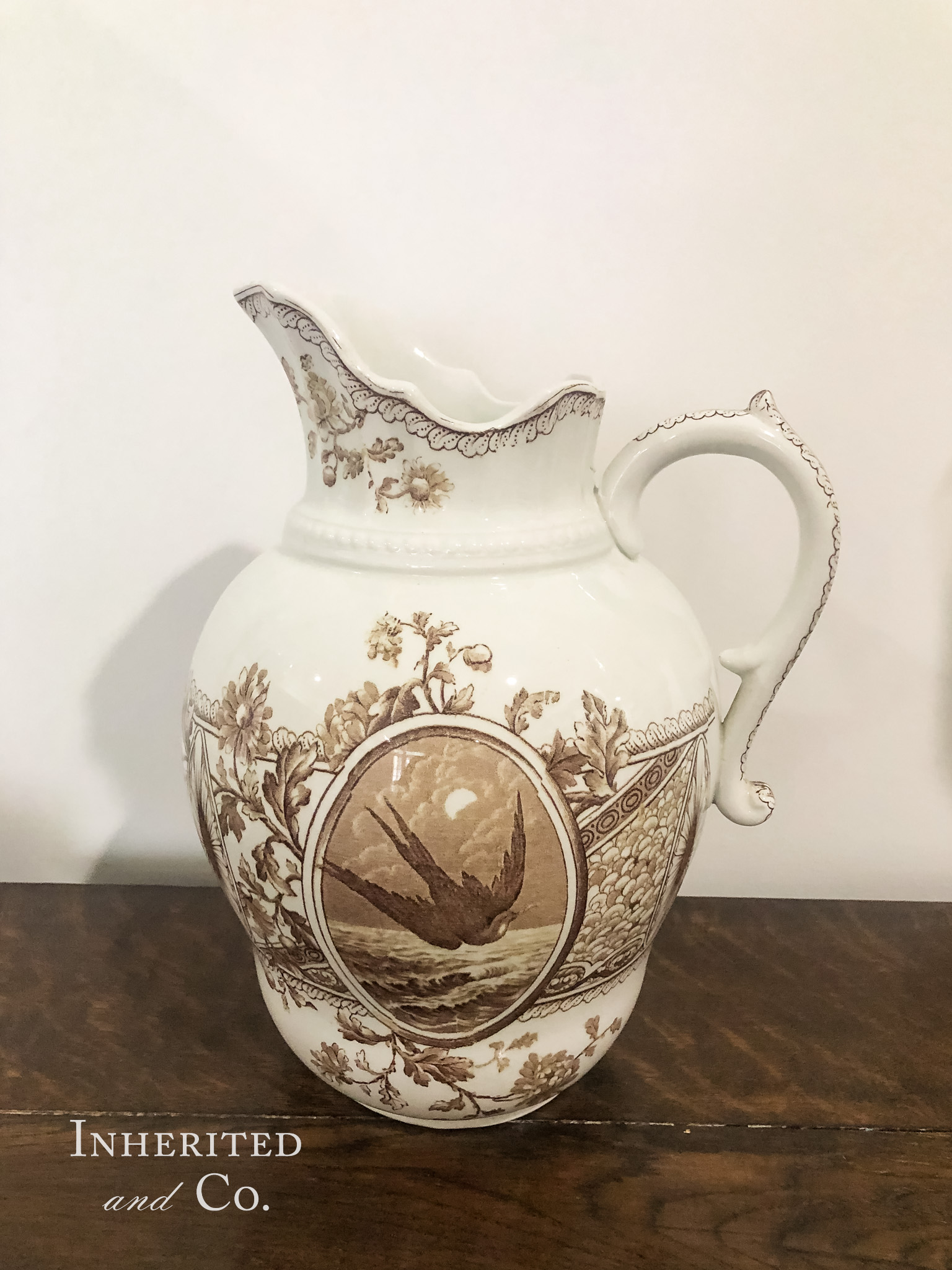
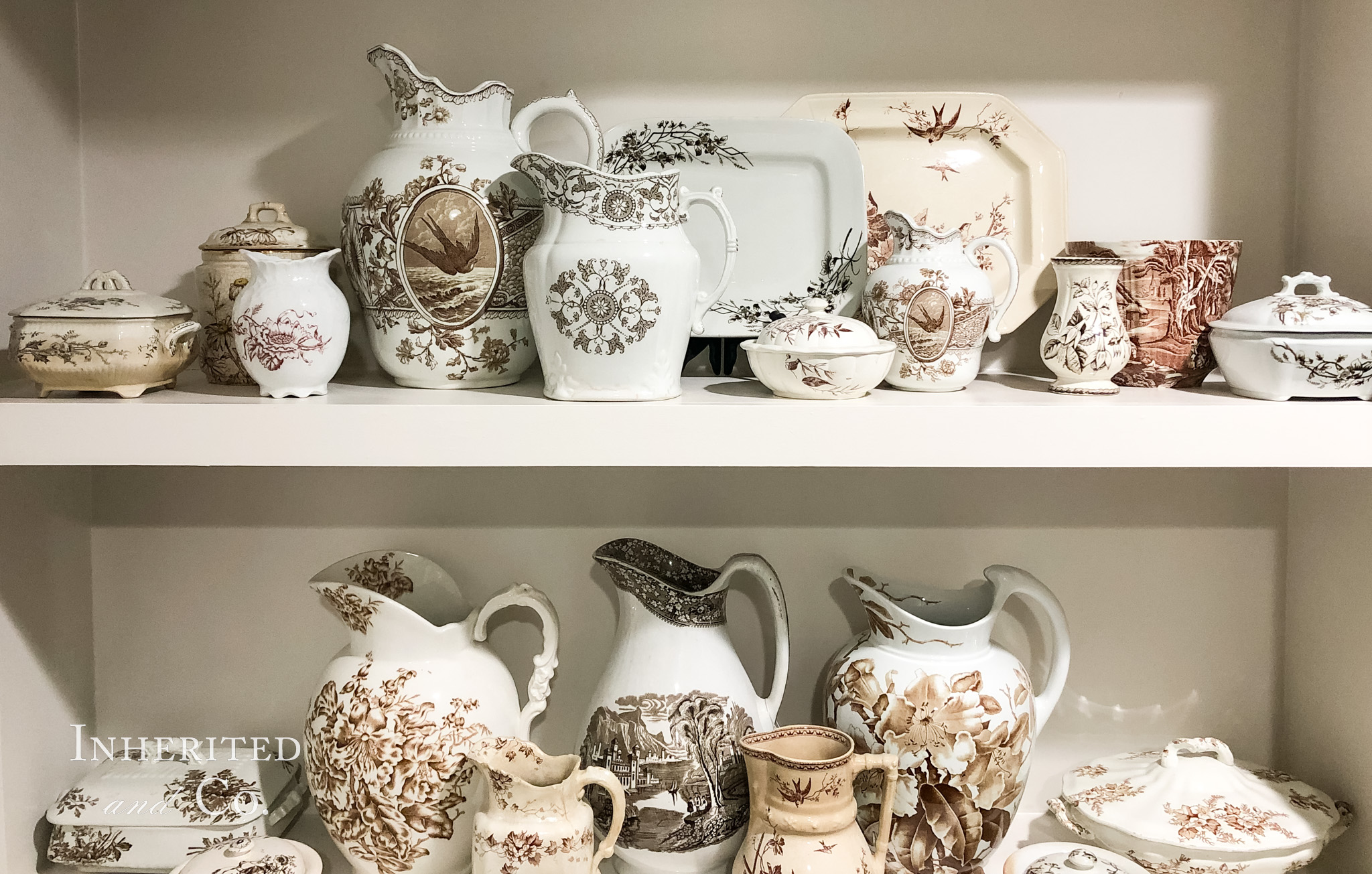
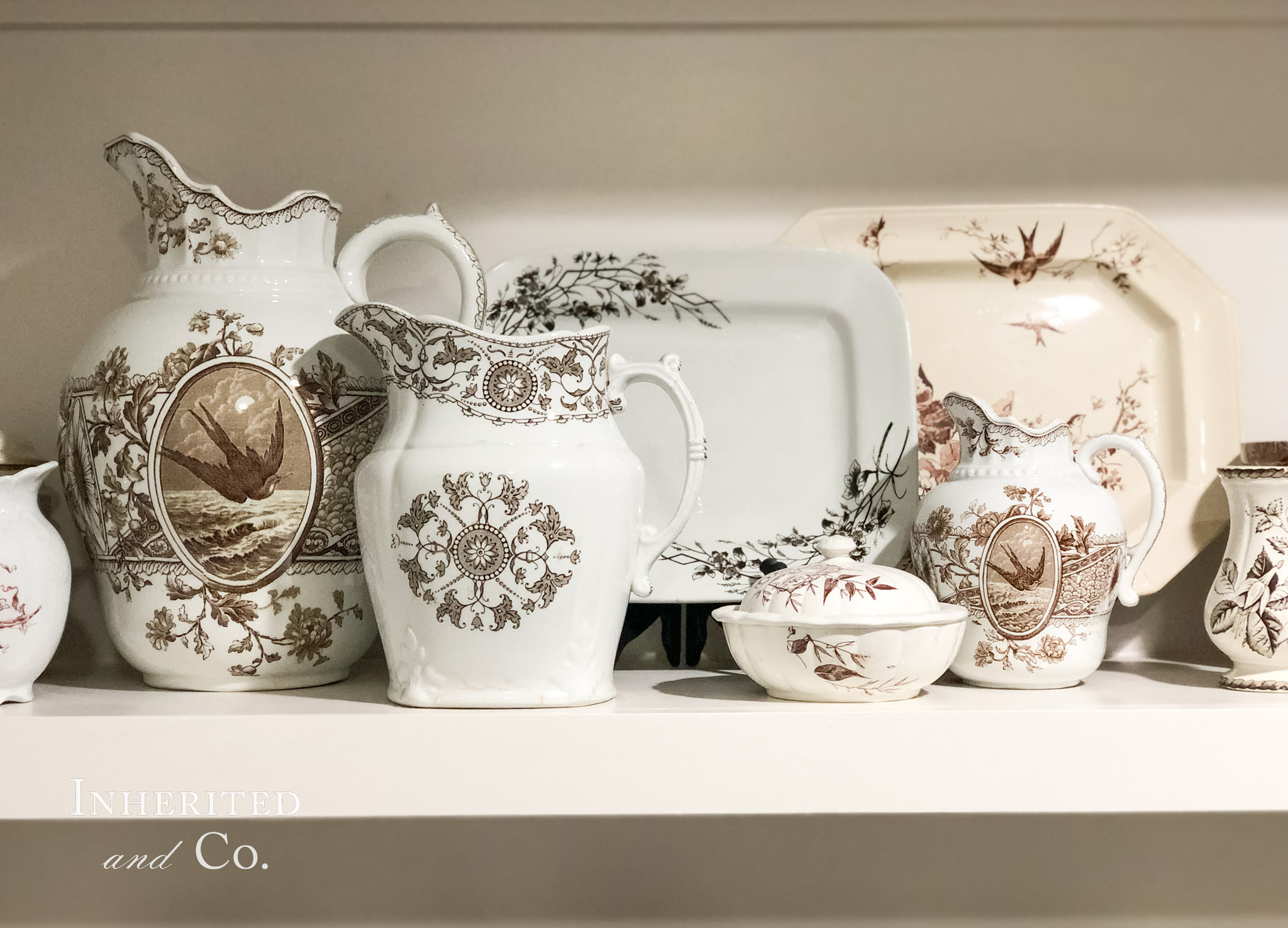
Related Posts, Pages, and Sources
- If you are wanting to locate an antique or vintage find like one I shared in this post, check out these pieces of brown transferware.
- If you are looking for other antiques for your home, check out my Antiques Shop Page.
- If you are looking for more inspiration using antiques in your home, check out these posts:
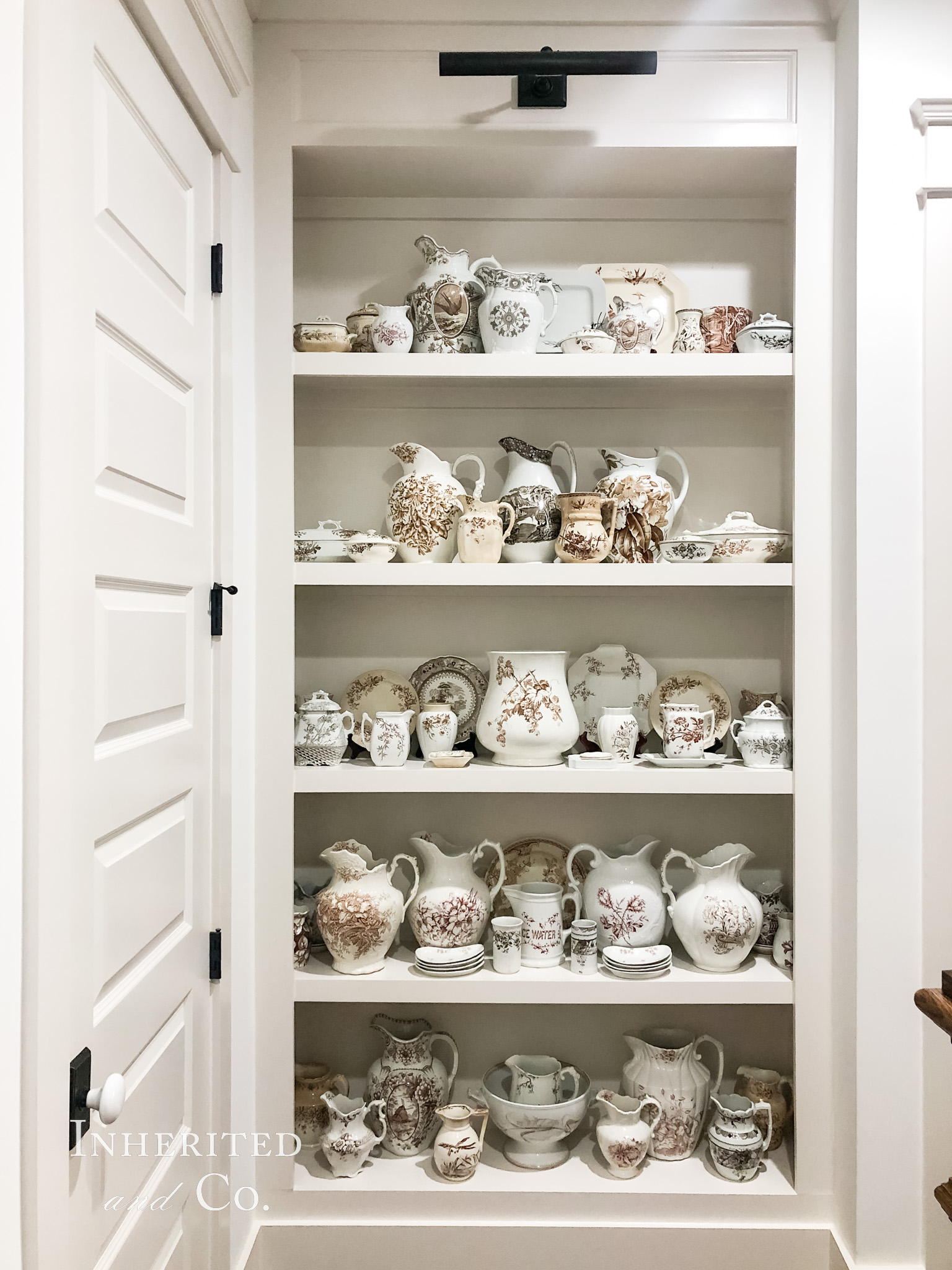
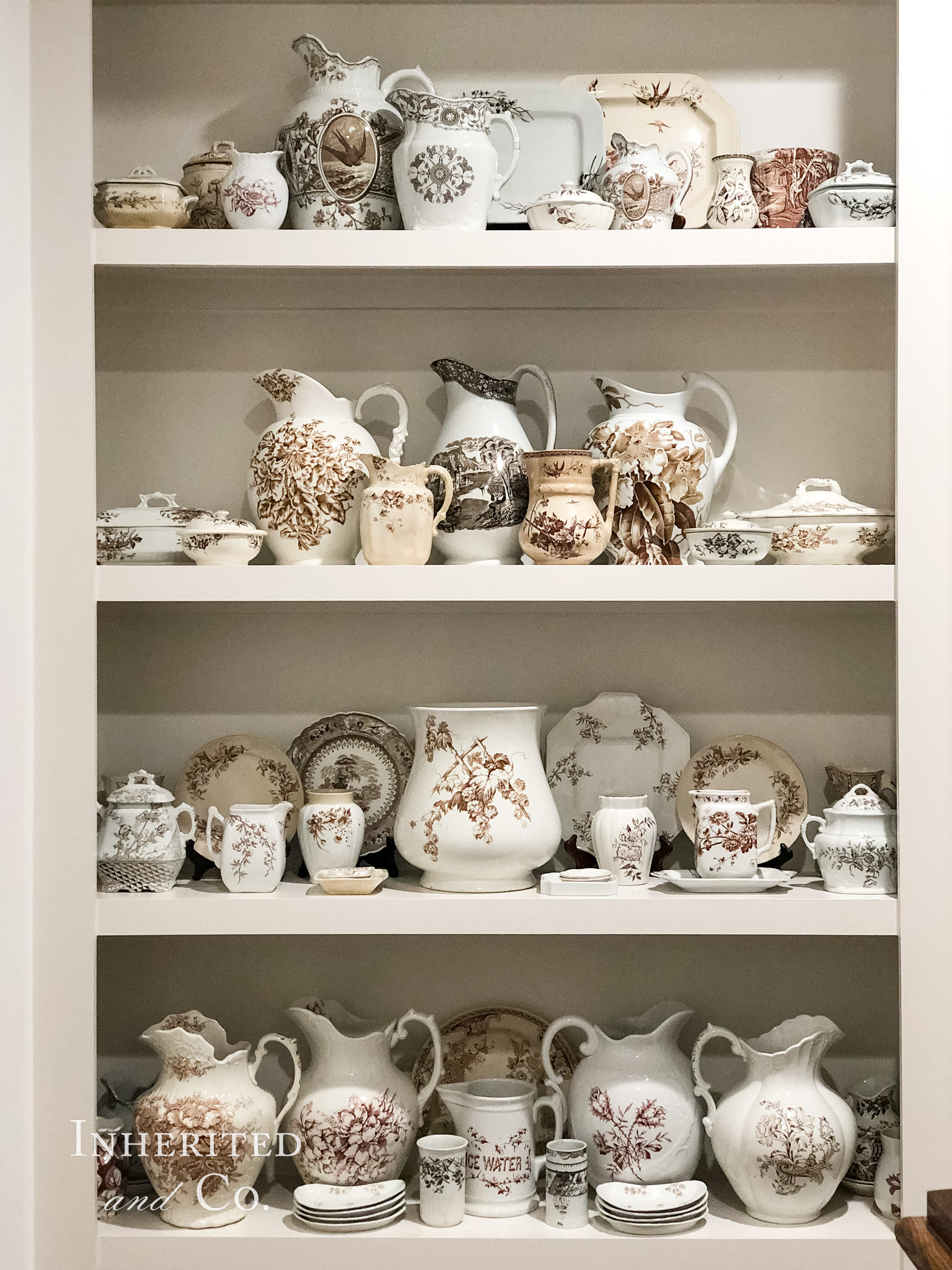
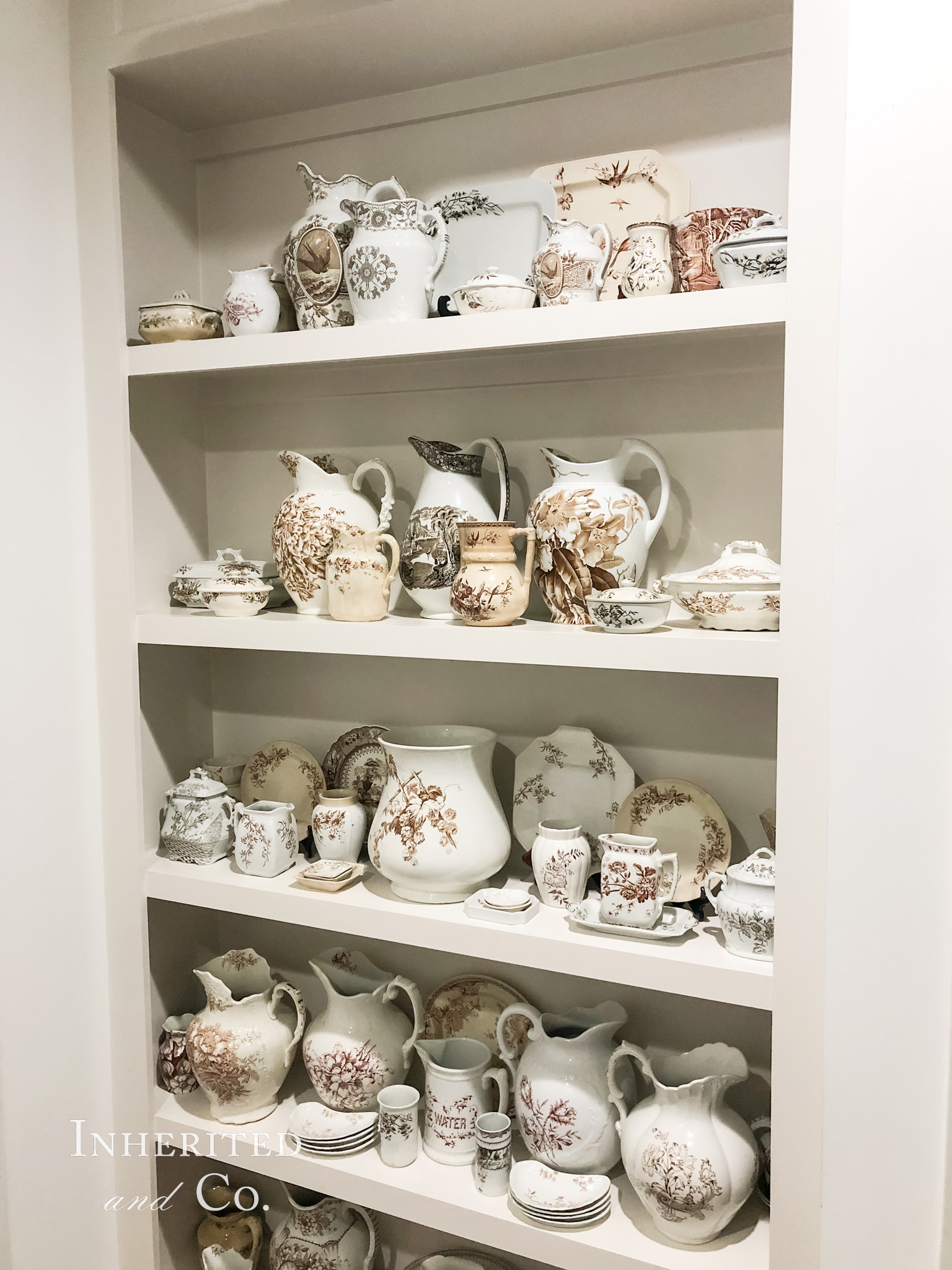
Keeping Your Antique Collection Manageable
Hopefully, you find one of these four ways to keep your antique collection manageable beneficial. If you do not find ways to keep your collection limited, you will find yourself in an overwhelming position.
If you are inspired to get a handle on your antique collection, I would love to see your before and after project. Be sure to tag me @inheritedadco in your photo, for a chance to be shared and inspire others.
Happy Collecting!
